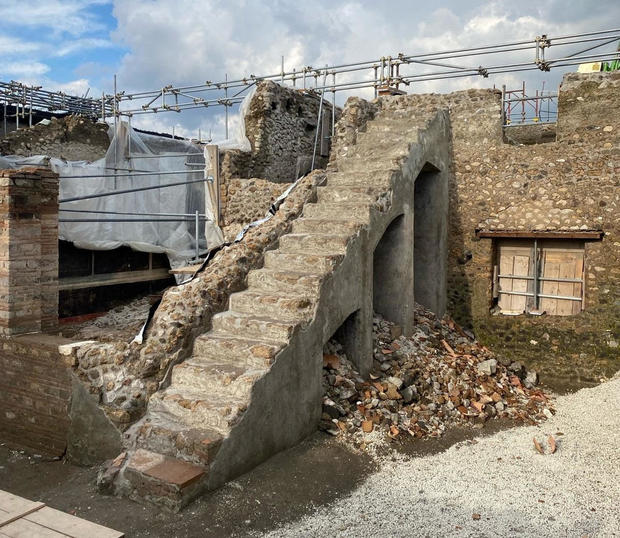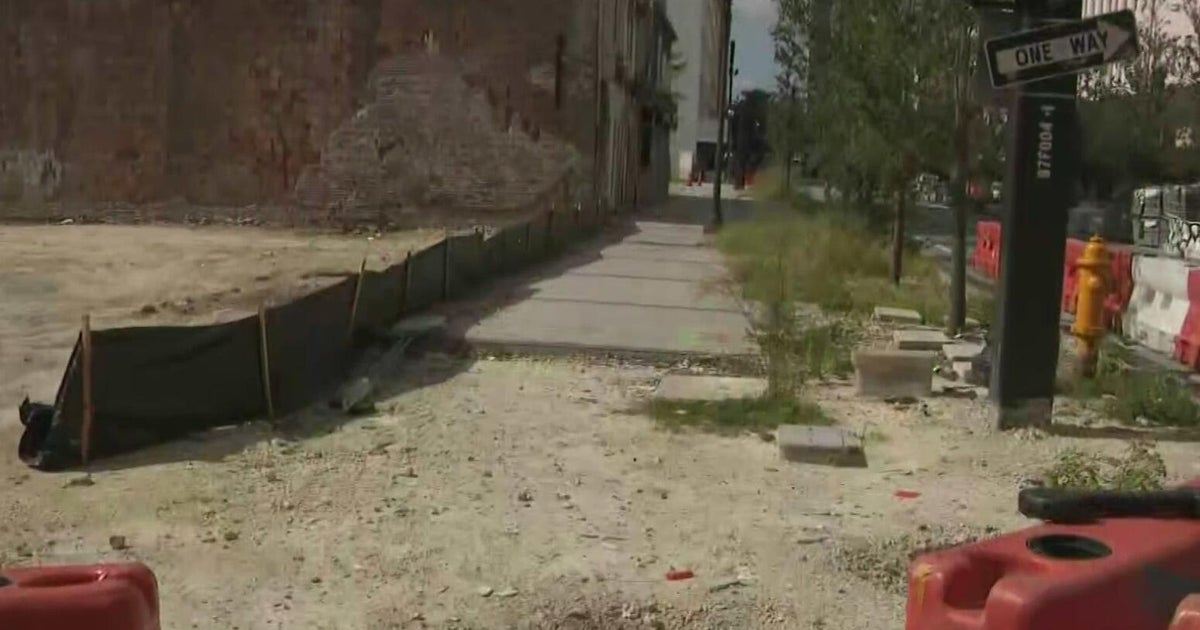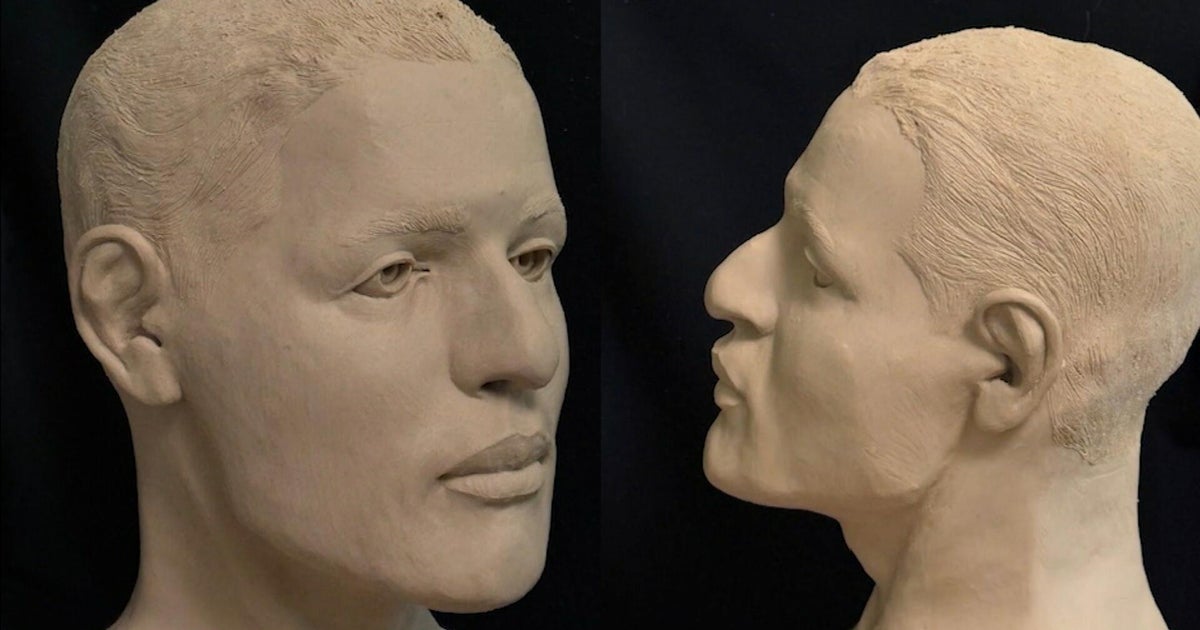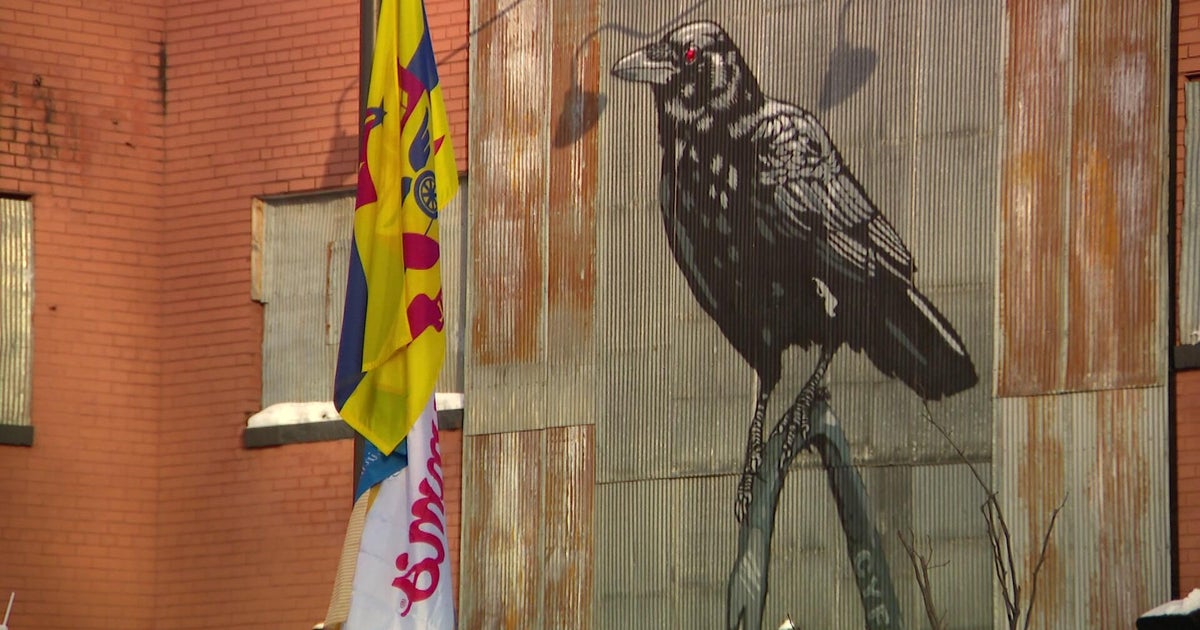Construction site found at Pompeii reveals details of ancient building techniques – and politics
A construction site in Pompeii that was being worked on until the eruption of Vesuvius has been discovered, unlocking hidden details about the construction – and politics – in the ancient city. Archeologists excavating Pompeii, a city that was buried under lava in 79 AD, found a house that was under construction when the disaster happened, according to Italy's Ministry of Culture.
Materials like work bricks and tools were piled up in the reception area of the house and lime and plaster used to make walls was found. Construction tools were discovered in several rooms, including tools to prepare mortar and pull up a vertical wall.
The home also included a bakery, which was discovered last year. Archeologists found words etched on stone that urged voters to elect a man named Aulus Rustius Verus, according to Pompeii Archaeological Park, which published the findings in its journal, Pompeii Scavi, in 2023.
This may have been a sign of "vote buying" – the candidate giving the business money in exchange for votes. They also found a painting in the building.
A nearby house, which is still being investigated, also shows evidence of construction including "enormous piles of stones" for the walls and ceramics and tiles collected to be transformed into cocciopesto, a type of concrete.
The construction site was active until Vesuvius, which is just south of Napels, erupted. The lava flow began around lunchtime and lasted until the following day. Over the past 250 years, more than 1,300 victims have been found. In November 2020, archaeologists found two bodies, believed to be an enslaved person and his possible owner.
According to the researchers, the discovery of the construction site shows workers used quicklime to create buildings. The construction material forms a putty with water and produces heat. It appears in this case, the quicklime was mixed with sand.
During construction, the mixture of the lime, sand and stones was still hot and therefore dried more quickly, which shortened construction time. This method is still used today, the researchers say.
"It is a further example of how the small city of Pompeii makes us understand many things about the great Roman Empire, not least the use of cement works," said Gabriel Zuchtriegel, director of the park. Without this type of cement, other Italian historical sites like the Colosseum, Pantheon or Baths of Caracalla would not have been built, Zuchtriegel said.
Zuchtriegel said work was underway almost everywhere in Pompeii before the volcanic eruption, and this type of cement helped speed construction.











